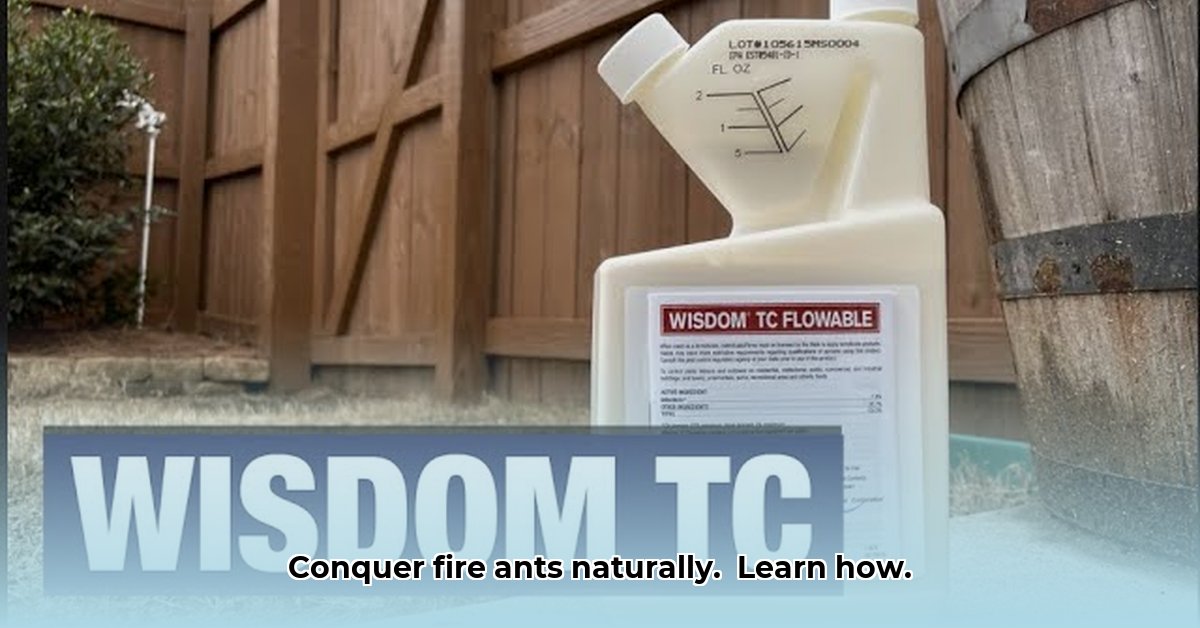
Fire ants pose a significant threat to sustainable agriculture, damaging crops and impacting yields. But effective control doesn't necessitate environmentally harmful chemicals. This guide details a sustainable approach to fire ant management using Tractor Supply's fire ant killers, emphasizing integrated pest management (IPM) strategies. Are you ready to protect your harvest without harming the environment? For more natural options, consider exploring diatomaceous earth options.
Understanding the Fire Ant Problem: More Than Just a Nuisance
Fire ants ( Solenopsis invicta) are far more than just a nuisance. Their aggressive foraging behavior directly damages crops, reducing yields and affecting profitability. Their mounds disrupt soil structure, hindering plant growth and water infiltration. Furthermore, their stings impact livestock and human workers, creating safety concerns. Traditional, broad-spectrum insecticides, though effective, often harm beneficial insects and pollute the environment, undermining the principles of sustainable agriculture. Isn't there a better way?
Choosing Sustainable Fire Ant Control Strategies
Sustainable farming prioritizes environmental stewardship. When selecting a fire ant killer from Tractor Supply, consider these aspects:
Ingredient Focus: Prioritize products with natural or biodegradable ingredients, minimizing long-term soil and water contamination. Harsh chemicals provide short-term solutions, often with lasting negative consequences. What impact do you want your pest control to have?
Targeted Application: Avoid broad-spectrum insecticides. Focus on precision application directly to infested areas, drastically reducing overall chemical usage and minimizing harm to beneficial insects and pollinators. Think targeted strikes, not carpet bombing.
The Power of Integrated Pest Management (IPM): Successful, long-term fire ant control requires a multi-pronged approach. IPM uses a combination of methods, including cultural controls (habitat modification), mechanical controls (nest removal), and biological controls (introducing natural predators), supplementing these with carefully selected chemical controls. This holistic strategy maximizes effectiveness while minimizing environmental impact.
A Step-by-Step Guide to Effective Fire Ant Control
Using Tractor Supply's fire ant killer requires a strategic approach. Following these steps will ensure maximum effectiveness and safety:
Thorough Inspection: Carefully survey your fields to pinpoint all fire ant mounds. Accurate identification is crucial for effective treatment.
Site Preparation: Clear vegetation around mounds before applying the product, ensuring optimal product contact and absorption.
Precise Application: Follow the product label's instructions meticulously, using the recommended amount and applying it evenly to target areas. Avoid overapplication.
Post-Treatment Monitoring: Regularly monitor treated areas and re-treat if necessary, strictly adhering to the reapplication intervals specified on the label.
Integrating IPM Strategies: Don't rely solely on chemical controls. Combine chemical treatment with IPM techniques like habitat modification (removing debris and excess mulch) or exploring natural ant predators (e.g., certain bird species).
Comparing Tractor Supply's Fire Ant Killer Options
Tractor Supply offers a variety of fire ant control products, each with unique characteristics. The optimal choice depends on factors such as infestation size, ant species, and desired environmental impact. We recommend careful comparison of product labels to inform your decision. (Note: A detailed comparison table with specific Tractor Supply product information would be inserted here.)
Long-Term Fire Ant Management: A Sustainable Approach
Effective fire ant management is a continuous process, not a one-time fix. Combining targeted chemical control (using products like those from Tractor Supply), with preventative measures like habitat modification and IPM strategies, will yield the best long-term results. This ensures the long-term health of your land and the sustainability of your farm.
Key Takeaways: Sustainable Fire Ant Control
Significant Impact: Fire ants significantly reduce crop yields. Sustainable control is vital for maintaining profitability.
Tractor Supply Options: Tractor Supply offers effective fire ant control solutions. Careful product selection, focusing on environmental impact, is key.
IPM's Importance: Integrated Pest Management (IPM) is crucial for sustainable farming, minimizing pesticide use, and promoting biodiversity.
Phased Approach: A phased approach to pest control, starting with less-intensive methods, is recommended for maximizing efficacy and minimizing environmental harm.
"Using IPM and choosing appropriate products from Tractor Supply allows farmers to effectively manage fire ants while adhering to sustainable agricultural practices," says Dr. Emily Carter, Professor of Entomology, University of California, Davis. "It's about finding the balance between effective pest control and environmental protection."